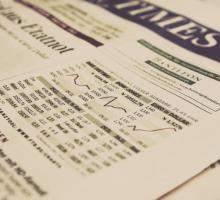Economic variables are measurements that describe economic units, like the GDP, Inflation or Interest Rates.
A variable is defined as a set of attributes of an object. Attributes are characteristics that describe an object. Economic variables are measurements that describe economic units, for example, a country, a government, a company or a person.
Types of Economic Variables
- Quantity: GPD, Unemployment
- Quality: Productivity, Utility
- Distribution: Gini Coefficient
Macro and Microeconomic Variables
Macroeconomic variables are associated with economic aggregates: a country, a region, the population of a country, all companies in a country. Macroeconomics studies the behavior of economic aggregates.
Microeconomic variables describe individual economic units: a family, a person or a company. Microeconomics studies the behavior of individual economic units
Examples of Macroeconomic Variables:
- Gross Domestic Product: The monetary value of final goods and services produced by an economy in a given period of time.
- Inflation: The proportional variation of the Consumer Price Index over a period of time.
- Unemployment: The percentage of the labor force currently unemployed and actively seeking employment.
- Government Spending: Government consumption, investment and transfer payments.
- Interest Rate: The cost of borrowing money. It can be both a macroeconomic or a microeconomic variable.
- Nominal Exchange Rate: The number of units of the domestic currency that are needed to purchase a unit of a given foreign currency.
Examples of Microeconomic Variables:
- Price: The amount of money required or given in payment for something.
- Individual Expenditure:The expenditure of a family, the expenditure of a business or the expenditure in a single product.
- Consumption.
- Quantity produced: The quantity of goods produced by firms.
- Wage
- Individual investment
There is a relation between microeconomic variables and macroeconomic variables. Many macroeconomics variables are composed of microeconomic variables. For example, aggregate spending is the sum of all individual spending. A price index is an average of many individual prices.
Real vs. Nominal Economic Variables
Nominal variables express the value of a good or service in terms of money. Real variables remove the effect of changes in prices in a time series.
Artificial Economic Variables
Some economic variables are artificial constructs, like the utility. The utility refers to the satisfaction received by consuming a good or service, but the utility is an abstract construct, rather than an observable quantity. The utility cannot be directly measured.




